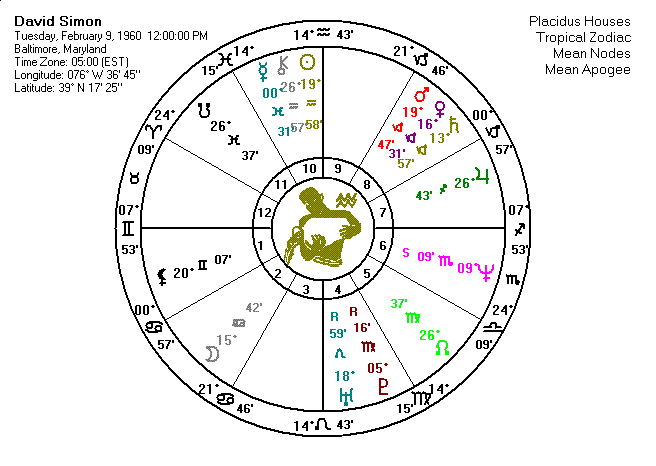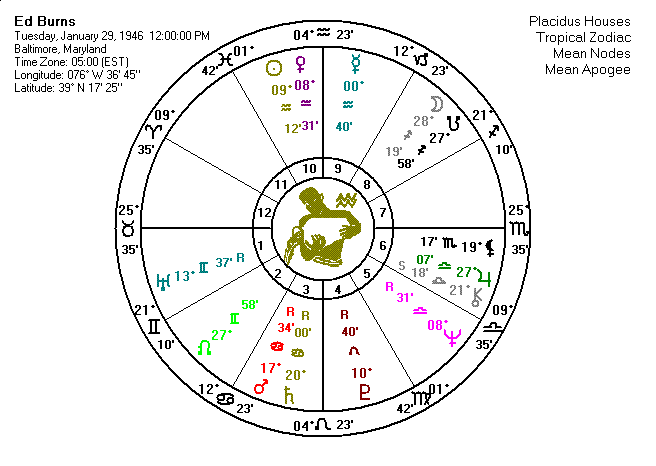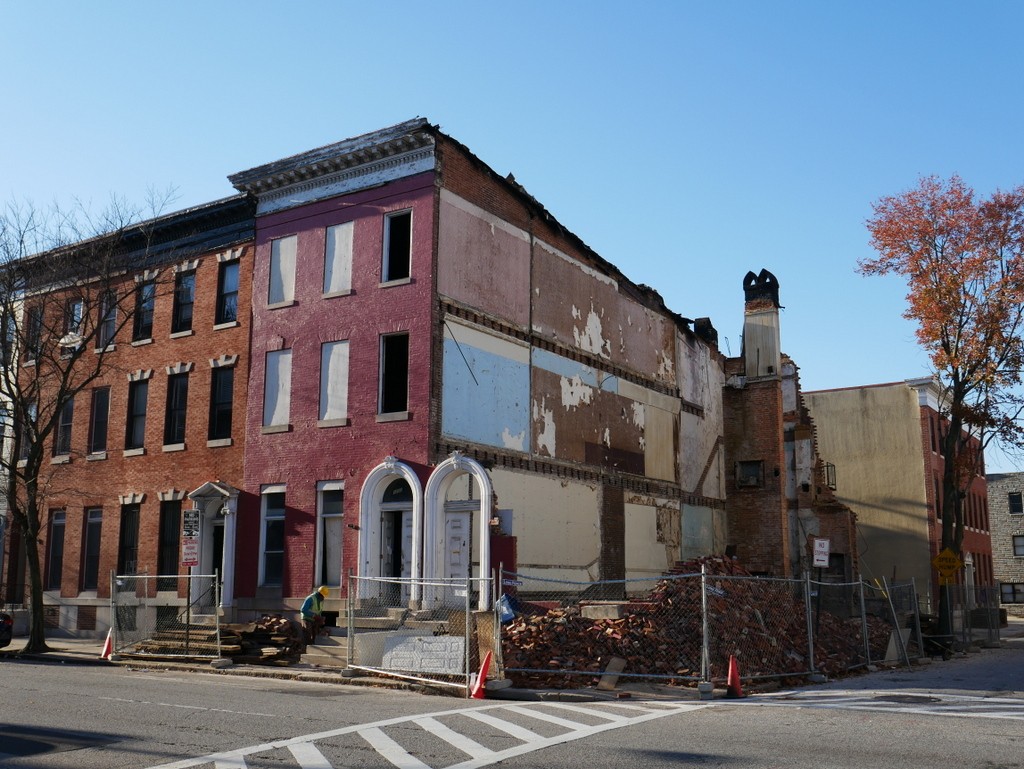West Baltimore is one of the city’s high crime areas but also home to the Edgar Allan Poe Museum. It is particularly dangerous at night.
I was captivated by “The Wire,” a streaming series about the city of Baltimore’s* police force. It really showed how these inner-city bureaucracies work: law enforcement, education, local government, and journalism. The series ran for five seasons. It was developed and created by David Simon and Ed Burns and based on their experiences.
I believe the two men put their perceptions and personalities into the characters they created. The series was realistic and gritty. **
Both David Simon (February 9, 1960) and Ed Burns (January 29, 1946) were Aquarians. Simon was a reporter for The Baltimore Sun who worked the police beat. He later accepted a buyout from the paper. (Britannica: “David Simon: American writer and producer”)
Simon’s writing partner, Ed Burns, a Viet Nam veteran, served in the Baltimore police Department for twenty years. After retiring from the department, he became a middle school teacher in the Baltimore public school system. He had no experience. There was a teacher shortage. Psychologically Burns compared his experiences in education to the war in Viet Nam. (Wikipedia, “Ed Burns”)
Burns and Simon showed how our core beliefs— integrity, sensitivity, fairness, kindness— can be undermined by our work environments and experiences with others, particularly when we toil in a vast hierarchical, bureaucratic system.
In the inner city of Baltimore social Darwinism* seems to prevail. It’s survival of the fittest for those involved with drugs on the streets. The weak feel trapped in an environment with no way out. They do not have a support system (family, good friends). They turn to drugs to escape. Stronger personalities turn to violence and coercive behavior to survive. Those with a very high need for power and recognition (an offshoot of the same thing) want to run the whole nefarious shebang.
A city police force manages the situation. In “The Wire” crime statistics are “juked” to show progress. City politicians and the police commissioner want to look good. Competent police who raise the ire of their superiors are buried in dead end jobs such as evidence collection. Trying to reduce crime leads to a high use of alcohol on the part of low rank and file patrolmen to manage frustration. Making street corner arrests does not put a dent into the problem, for there are an infinite supply of bodies to replace them. Experienced street cops learn how to play the system, to bend rules but occasionally cross the line.
“The Wire” depicts city journalism as not unlike the police. One reporter embellishes stories and credits sources that do not exist or adds fallacious material to their accounts.
He is aided by some of his superiors—they print his stories unedited– because of their journalistic philosophy and inability to perceive and accept the reporter’s peccadilloes even when presented with much evidence. He wins a prestigious award.
There was also the interplay between the newspaper and police department. The bosses in the latter were wary of the former and wanted to present the work of the department in the best possible light. Problems and failures were hidden. Those responsible were forced to retire.
Public education has always been a hot button political topic. If I remember correctly from what my friend told me, research shows the public is satisfied with their children’s local school, but the one nearby needs improvement. Unfamiliarity breeds a kind of contempt.
In “The Wire” an inner-city school is depicted as one might expect. Students are disruptive, defiant, and uninterested in their schoolwork. A good teacher develops relationships; then students will buy into his or her program. This is much harder to accomplish when the children come from highly dysfunctional families. The show did an outstanding job of depicting that.
“The Wire” derives its title from the need of law enforcement to establish surveillance of a couple of drug kingpins’ cell phones and computers in order to catch them dealing drugs on both the wholesale and retail sides of the business. Those who run criminal enterprises are crafty. Their conversations are in code. The organize street buys so their underlings will take the hit if anything goes amiss.
_________________________
*Baltimore had a population of 585,708 in 2020. Its police department has a staff of 4,000. In 2022 the crime rate was 657 per 100,000 which higher than 98.6% of US cities. (City-Data.com) Sandtown-Winchester is one of the most blighted communities in Baltimore and served as the filming location for “The Wire.” 25% of neighborhoods are responsible for 80% of the homicides. (Wikipedia, “Crime in Baltimore”)
**Other Aquarian writers who wrote about the ills of society include retired LA detective Joseph Wambaugh (The Blue Knight, Lines and Shadows), Stendahl (The Red and Black), and Charles Dickens (Oliver Twist, Bleak House, Hard Times).
David Simon Horoscope Analysis

David Simon’s time of birth was not known. 12 p.m. was arbitrarily chosen. His place of birth was Washington, D.C.
Sun in Aquarius-Friendly but aloof, altruistic, reform minded, forward thinking, independent, inventive, intellectually inclined.
David Simon has a Cancer Moon to go along with an Aquarian Sun. The time of birth is not known. The Moon in that place tends to give a sympathetic nature and sensitivity to surroundings. There is an urge to protect. (Parker, The Compleat Astrologer, p. 88)
In a writer we might expect to see a heavily aspected Mercury, the planet of communication. However, David’s is only joined to Chiron. That aspect is said to give the native “unusual intellectual insight, heightened perceptions, and keen awareness.” (Astrologify, “Mercury conjunction Chiron: Exceptionality and Perseverance” by Liz Ray, January 27, 2025)
As David has Mercury in Pisces, that placement together with the Moon’s would probably serve to make him highly impressionable.
Simon’s Black Moon Lilith, his shadow self, is in Gemini. This makes him an avid learner and one who likes to observe people and is adept at interpreting their reactions. (Astrology: A Stellar Tool for Self-Reflection, “Black Moon Lilith in Gemini Natal Meaning, advanced-astrology.com)
Ed Burns Horoscope Analysis

The time of Ed Burns’ birth is not known. 12 p.m. was arbitrarily chosen.
Ed Burns has a most interesting chart for a policeman, for the Sun is in conjunction with Venus. The joining of the two planets would making him charming and warmhearted. He has a grand trine in his chart. Sun and Venus are trine to Uranus in Gemini and Neptune in Libra. As it involves air signs, Burns “will likely be smart and savvy since this trine is all about mental activities, communication, ideas, thinking, and thought.” (Mindbodygreen.com “Is There a Grand Trine in your Birth Chart? How to tell and What it Means” by Sarah Regan, January 5, 2022)
Burns’ Mars is in Cancer. This position may have well made him quite protective of others. A common police motto is to protect and serve.

